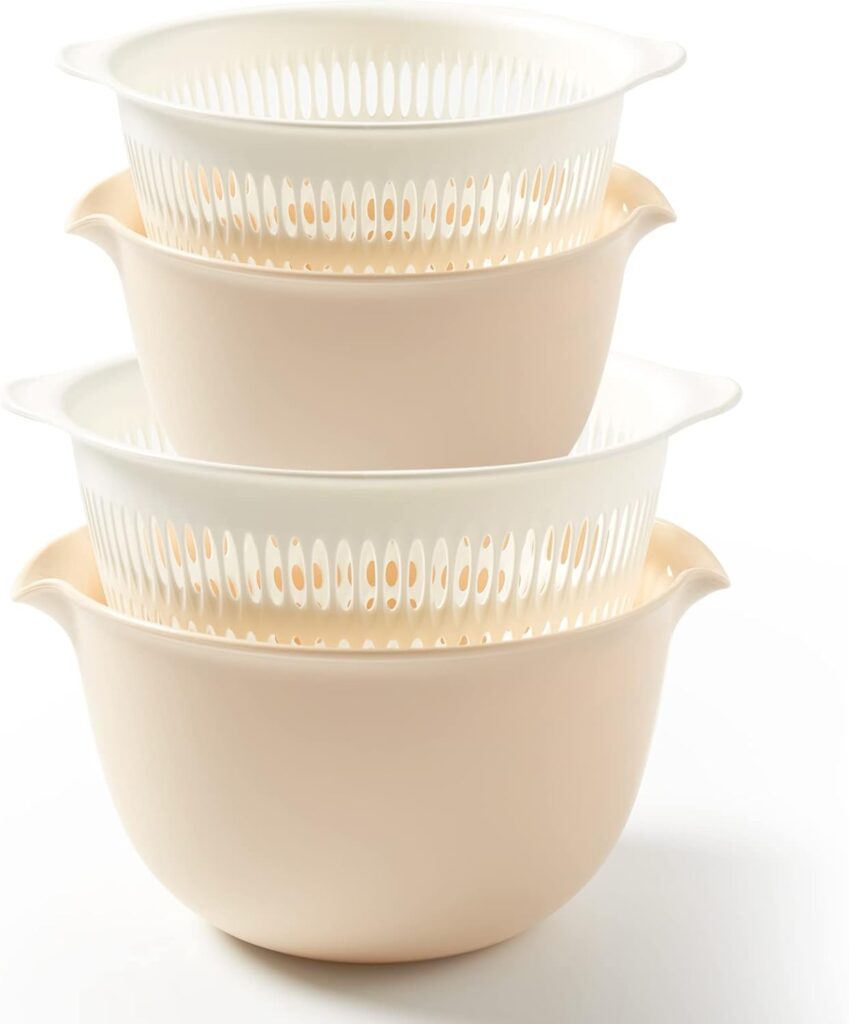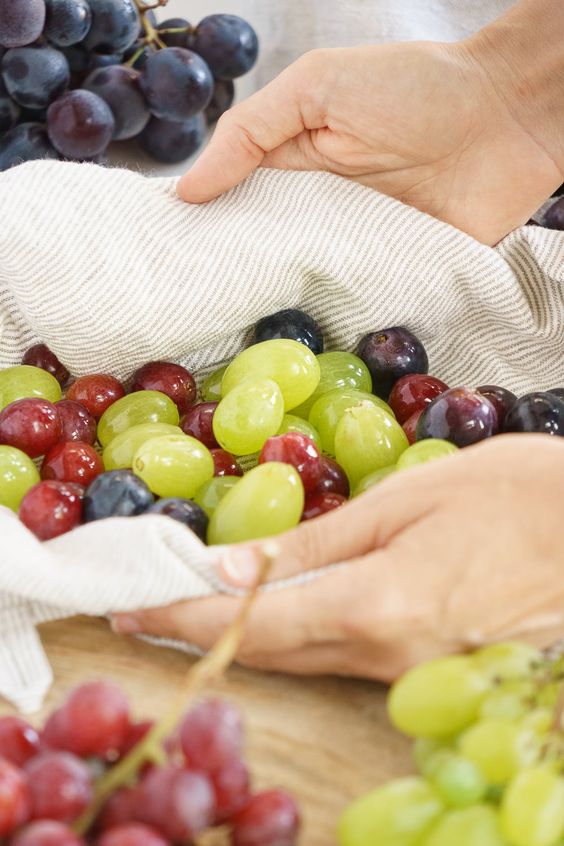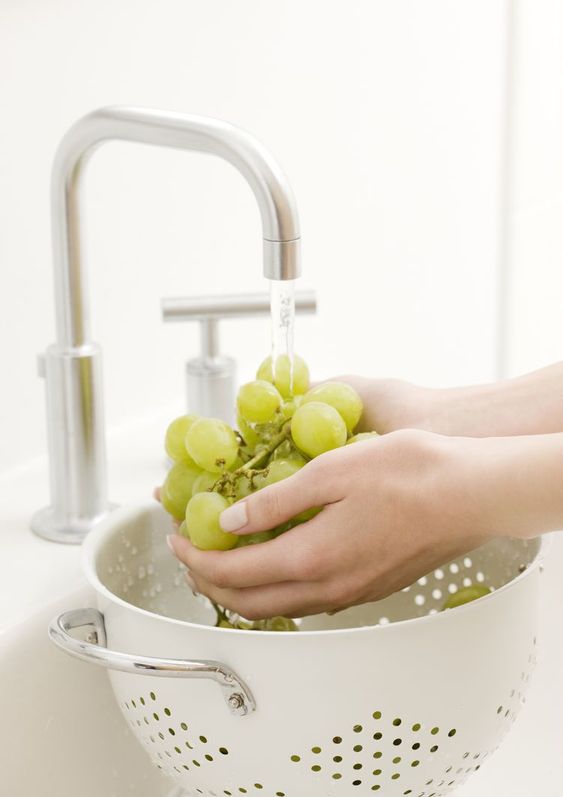As a delicious, juicy fruit, grapes often become one of our favorite choices in our daily food preparations. However, do you know how to properly clean grapes? After an experiment in our kitchen, we’ve put together a simple yet effective way to clean grapes, let’s find out!
Grapes
Strainer or colander
Bowl or clean sink
water
vinegar (optional)

image from amazon
Prepare Cleaning Solution:
Fill a bowl or clean sink with cool water. You can add a little vinegar as vinegar helps remove bacteria and pesticides. But this step is optional.
Cleaning Grapes

image from Gathering Dreams
Place grapes in a strainer or colander.
Run the strainer under cold water and gently rinse the grapes, stirring gently with your hands. This helps remove any dirt, impurities or pesticide residue from the surface of the grapes.
Soak Grapes (optional)
If desired, you can let the grapes soak in the water-vinegar solution for a few minutes. This further cleans the grapes, removing any remaining bacteria or pesticides. But soaking is optional, and if you’ve rinsed the grapes thoroughly, this step isn’t necessary.
Final Rinse
After soaking (if you choose to do this), give the grapes a final rinse in cold water. This will help wash away any residual vinegar, ensuring the grapes are clean and residue-free.
Dry Grapes

image from Gathering Dreams
Once the grapes are thoroughly rinsed, shake off any excess water and transfer to a clean kitchen towel or paper towel to dry. Alternatively, you can let them air dry in a strainer.
Enjoy
Once the grapes are dry, they are ready to eat! You can enjoy them on their own as a snack, add them to fruit salads, or use them in a variety of recipes.
So, before you prepare to enjoy these delicious grapes, remember to give them a thorough cleaning. This not only ensures the safety and hygiene of grapes, but also allows us to better enjoy their deliciousness. In a busy life, attention to food can never be ignored, because every bite carries the care of health and happiness.
Why You Should Wash Grapes?
Removing residual materials: Grapes can be contaminated with pesticides, impurities and other chemicals. Through thorough cleaning, these residual substances can be removed and the risk of exposure to harmful substances during consumption can be reduced.
Reduce bacterial infection: Bacteria can be present on the surface of grapes, especially during picking and transportation. Proper cleaning can effectively reduce the risk of bacterial infection and protect the health of consumers.
Improve taste: Cleaning grapes not only keeps them hygienic but also improves taste. Remove surface dirt and residual substances to make grapes fresher and more delicious.
Safety for Children and the Elderly: Children and the elderly have relatively weak immune systems and are more susceptible to food contamination. Therefore, it is especially important for these groups to wash grapes to reduce the risk of food poisoning.
Develop good food safety awareness: Washing grapes is part of good food safety habits. By maintaining a constant focus on food hygiene, we can develop healthier eating habits and protect the health of ourselves and our families.
When to Wash Grapes?
Before eating: The best time to clean your grapes is before preparing them for eating. This ensures that the grapes are clean and hygienic when consumed.
After you buy it and get it home: If you plan to store your grapes in the refrigerator, it’s a good idea to wash them before placing them in the refrigerator. This prevents impurities and bacteria in the refrigerator from contaminating the grapes.
After picking and returning home: If you buy fresh grapes from an orchard or market, it’s best to wash them immediately after you get home. This avoids the impact of dirt and bacteria accumulated on the grapes during transportation.
If dirt is visible on the surface of the grapes: If you notice obvious dirt or residue on the surface of the grapes, it is best to wash them immediately to ensure hygienic safety when eating.
